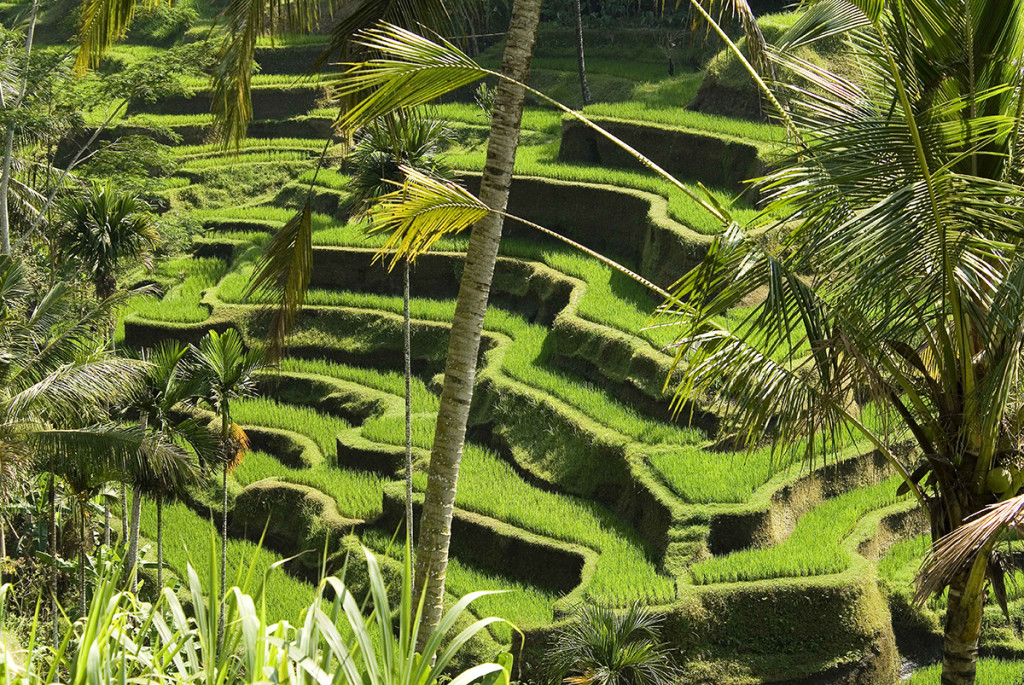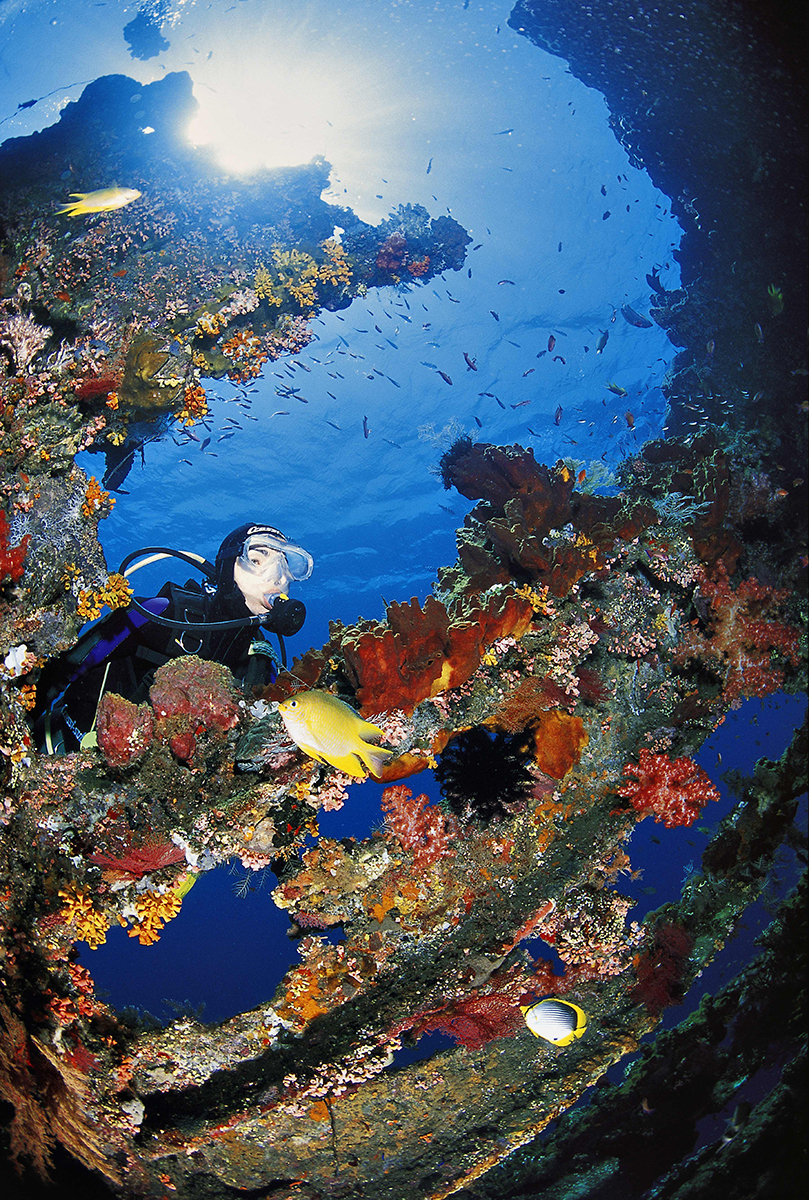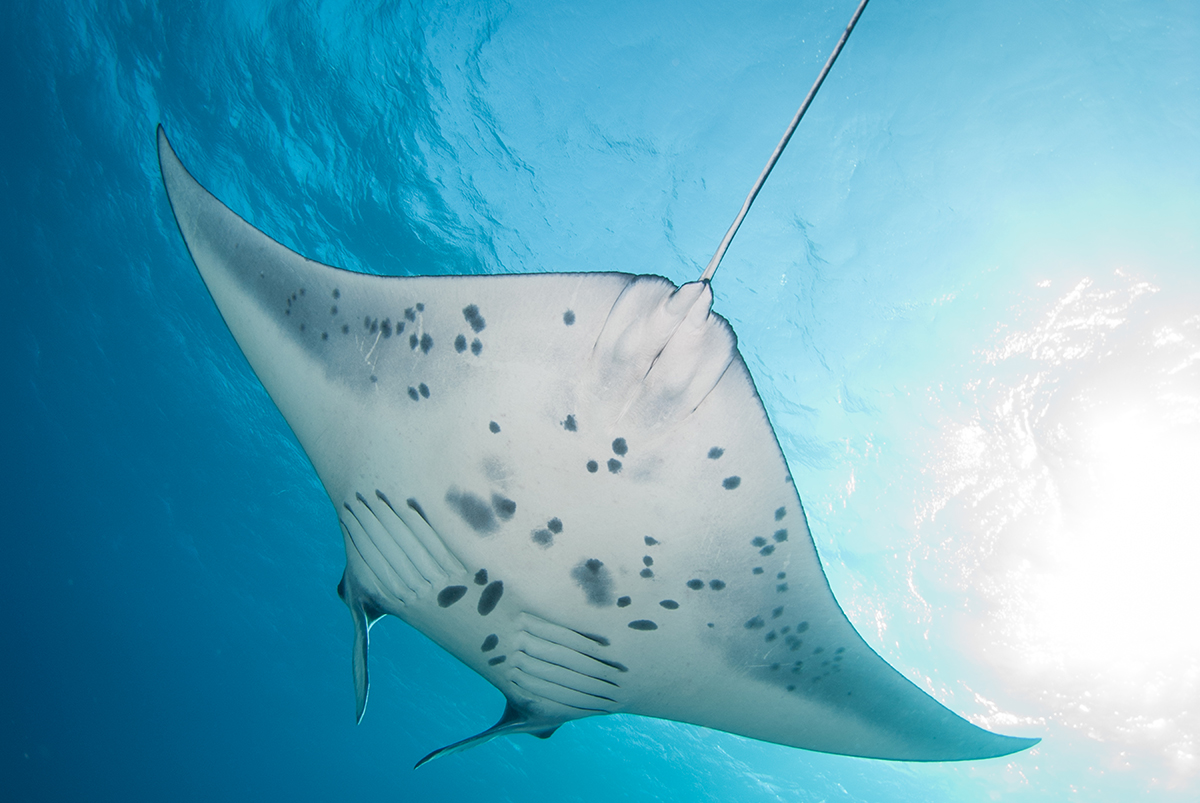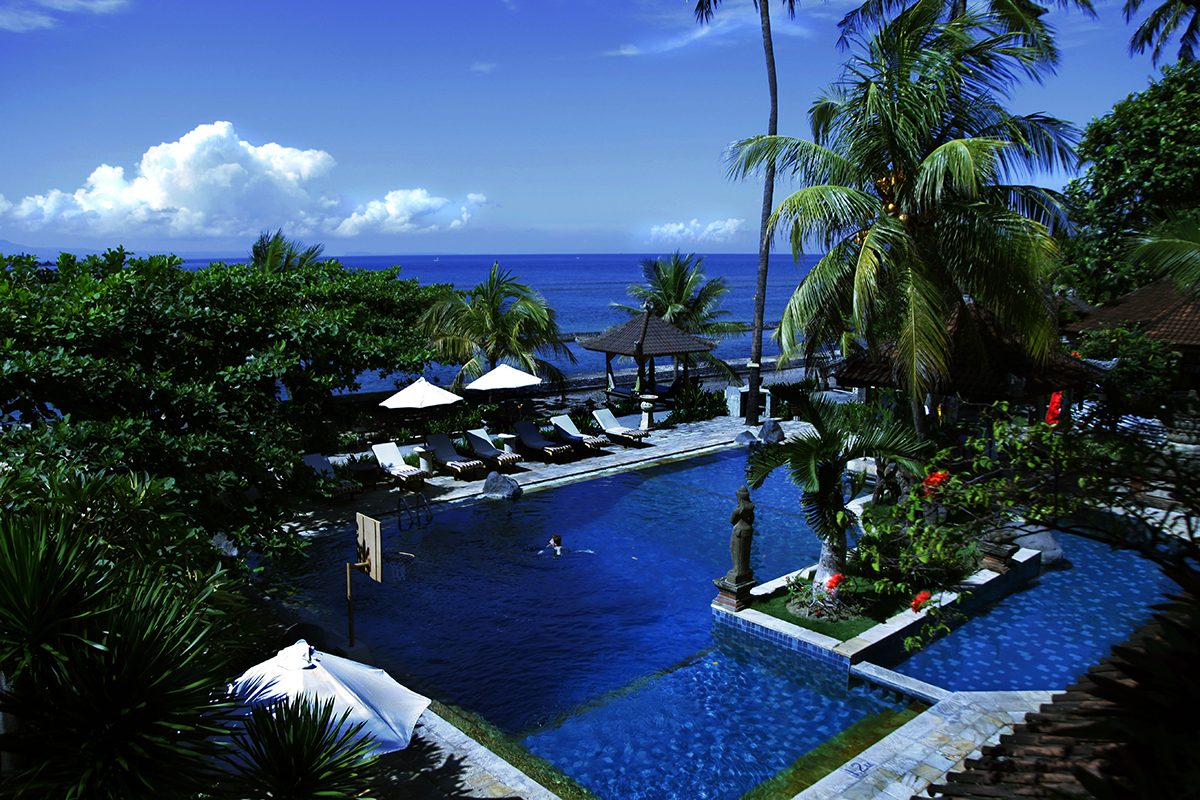News
Jim & Cary Yanny’s Guide to Diving in Indonesia
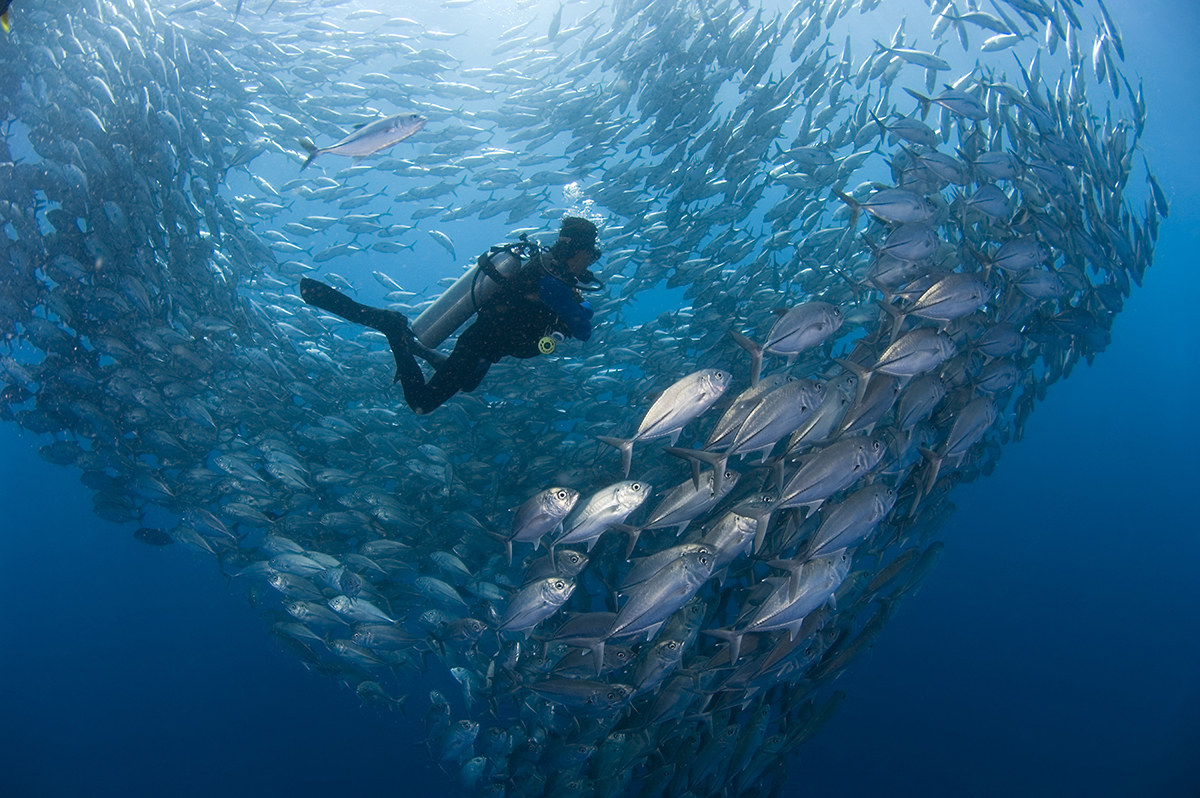
Part 3: Bali
Paddy fields – yes. Padi divers – really?
We’ve all heard of Bali. That’s the island full of temples, rice terraces and Aussie surfers. But take a pin and a map of the world and try to locate Bali and that’s where most people start to struggle. Well, the clue to its location is the fact that Bali is this month’s featured destination.
OK, so it’s in Indonesia. That in itself may still come as a surprise to you, but even though we’ve established that, the task of finding it amongst the world’s largest archipelago doesn’t get easier. Bali may well be a big name for British tourists but in the scheme of 17,000 islands spread over an ocean the size of the USA, it’s a needle in a haystack. This hundred-mile-long island with a population of over four million people is pretty tiny when you look at things on the Indonesian scale. Hey, everything’s relative and Indonesia is huge.
Having dreamt of visiting Bali since childhood, when we moved to live in Indonesia it was naturally our top choice when it came to our first work break and it was with great excitement that we jumped on the Lion Air flight for the short hop from our home in Manado. And Bali didn’t disappoint.
Well, actually, that’s not strictly true. To explain, on our first day we took a tour of the island and were driven past volcanoes, forests, rivers and cute villages. What’s not to like about that, I hear you ask? Well, nothing, of course, except that it looked an awful lot like our new home back in Manado! So at this point we’re thinking, “why all the hype, Bali?”
Well, patience is a virtue and the more we saw of Bali, the more we started to understand its draw. The main things that grab you are the incredible attention to detail and patience of the unique Hindu-Buddhist-blend Balinese culture and the gentleness of their society that’s so ingrained that it takes you over and changes your whole outlook on the world. We’re aware that this probably sounds corny, but it’s true. The Balinese manage to do so because it’s not some tourist trap – they live their lives by this code and so charm and capture us. It’s what makes Bali such a magical place and why it’s known as “The Island of the Gods”, an apt strapline if ever there was one.
On the many visits we made to Bali over our twelve years in Indonesia we purchased beautiful crafts, ate incredible food, were pampered like royalty in its spas, drank sundowners to mellow Buddha Bar beats on surf beaches and ‘zenned-out’ watching ducks waddle amongst rice paddies under pouring, warm rain.
That’s nice, Jim, I hear you say, but what’s any of that got to do with diving? Fair question. Well, here’s the thing… as if Bali doesn’t already offer enough to get you running for a plane, it has one more BIG secret up its sleeve. Bali’s actually a pretty cool place to go for a dive! Oops, sorry, when we say pretty cool we really mean fantastic. Yep, those gods have only gone and blessed this ‘little’ island with great diving too. What’s more, the delights it offers the diver are incredibly varied. Come on! Now that’s just greedy.
Bali’s best-known dive, the wreck of the SS USAT Liberty is located at Tulamben on the North East corner of the island, about two hours’ drive from the capital, Denpasar. Here one can literally walk off the beach onto an incredibly photogenic WWI wreck sitting between 4m and 30m and covered in coral and teeming with fish life, including a resident huge school of swirling jacks, making it just the perfect spot for divers and snorkellers alike. So much so that a (tiny) resort town of Tulamben has sprung up purely to cater to divers. Either side of the Liberty wreck are little wall and ‘muck’ dives offering coral and critters to keep you busy for a good couple of days, and just half an hour’s drive from Tulamben is the little town of Amed, a lesser-known spot but offering excellent critter dives.
In the North West corner of Bali, about four hours’ drive from Denpasar and with views across to the awesome volcanoes of East Java, is Menjangan Island, a National Park with stunning coral walls and diverse marine life. Turtles come up onto deserted Menjangan Island to nest and can often be spotted perched on the vertical coral walls. A pretty little resort town, Pemuteran is where most divers stay when diving Menjangan National Park. Day trips are also available from Pemuteran to Secret Bay, Bali’s best muck/critter site.
So, a world-class wreck, critters and reefs. That’s it? Nope!
Just off Bali’s South East corner are Nusa Penida and Nusa Lembongan Islands, famous for being arguably the best place on earth to site a Mola mola (sun fish). Large manta rays can also be regularly seen on dives at Crystal Bay, in the channel between these two islands. The Mola mola are seasonal, usually between July and September, but the manta are spotted year-round.* Spend a couple of nights at one of the lovely resorts in Mushroom Bay on Nusa Lembongan to enjoy its white sand beach and a glorious sunset. Alternatively if you want to remain on the main island of Bali, you can take a diving day-trip across to these islands from Sanur Harbour. It’s a forty minute boat ride.
So there it is, Bali, the Island of Gods. Enjoy some wonderful days of diving while your other half relaxes by the pool, on the beach or in the spa, then top if off with either a scenic stay amongst Ubud’s artisan community in the middle of the island close to the Agung River Gorge, or if you’re still feeling energetic after all that diving head for the South coast’s surf beaches and thumping nightlife.
This is a destination that seems to have been tailor-made to cater for serious divers who want to do more than dive on their holiday. It could just be the uniquely perfect holiday choice for diver/non-diver couples. If that’s you, then head for Bali and you can finally remove the word ‘compromise’ from your vocabulary!
Bali offers a huge choice of accommodation. There are many flights from the UK to Denpasar via various cities e.g. Singapore, Dubai, Doha and Hong Kong. Bali is a year-round destination, always warm and humid, although it can rain at any time of year. (Tulamben in the North East receives much less rainfall and is subsequently more arid than the rest of the island.) It’s easy to combine a stay on Bali with a week or longer in another part of Indonesia, for example a resort stay in either North Sulawesi (Manado/Bunaken/Lembeh), Raja Ampat or a liveaboard in Komodo National Park.
* Dives around Nusa Penida/Nusa Lembongan are often deeper and there can be strong currents, so divers are required to have a higher experience level.
For more information, visit www.diversetravel.co.uk/destinations/Indonesia.
Blogs
Northern Red Sea Reefs and Wrecks Trip Report, Part 2: Wall to Wall Wrecks

Jake Davies boards Ghazala Explorer for an unforgettable Red Sea diving experience…
The second day’s diving was a day full of wreck diving at Abu Nuhas, which included the Chrisoula K, Carnatic, and Ghiannis D. The first dive of the day was onto the Chrisoula K, also known as the wreck of tiles. The 98m vessel remains largely intact where she was loaded with tiles which can be seen throughout the hold. The stern sits at 26m and the bow just below the surface. One of the highlights of the wreck is heading inside and seeing the workroom where the machinery used for cutting the tiles are perfectly intact. The bow provided some relaxing scenery as the bright sunlight highlighted the colours of the soft coral reef and the many reef fish.

Following breakfast, we then headed to the next wreck, which was the Carnatic. The Carnatic is an 89.9m sail steamer vessel that was built in Britain back in 1862. She ran aground on the reef back in 1869 and remains at 27m. At the time, she was carrying a range of items, including 40,000 sterling in gold. An impressive wreck where much of the superstructure remains, and the two large masts lay on the seafloor. The wooden ribs of the hull provide structures for lots of soft corals, and into the stern section, the light beams through, bouncing off the large shoals of glass fish that can be found using the structure as shelter from the larger predators that are found outside of the wreck.

The final wreck at Abu Nuhas was the Ghiannis D, originally called ‘Shoyo Maru,’ which was 99.5m long and built in Japan back in 1969 before becoming a Greek-registered cargo ship in 1980. The ship then ran aground on the reef on April 19th, 1983, and now sits at the bottom at a depth of 27m. Heading down the line, the stern of the ship remains in good condition compared to the rest of the hull. The highlight of the wreck, though, is heading into the stern section and down the flights of stairs to enter the engine room, which remains in good condition and is definitely worth exploring. After exploring the interior section of the ship, we then headed over to see the rest of the superstructure, where it’s particularly interesting to see the large table corals that have grown at the bow relatively quickly considering the date the ship sank. After surfacing and enjoying some afternoon snacks, we made sure everything was strapped down and secured as we would be heading north and crossing the Gulf of Suez, where the winds were still creating plenty of chop.

The next morning, it was a short hop to Ras Mohammed Nature Reserve for the next couple of days of diving. The 6am wake-up call came along with the briefing for the first site we would be diving, which was Shark & Yolanda. The low current conditions allowed us to start the dive at Anemone City, where we would drift along the steep, coral-filled wall. These dives involved drifts, as mooring in Ras Mohammed wasn’t allowed to protect the reefs. As a dive site, Shark & Yolanda is well-known and historically had a lot of sharks, but unfortunately not so many in recent years, especially not so early in the season. However, there was always a chance when looking out into the blue.

The gentle drift took us along the steep walls of the site, with plenty of anemone fish to be seen and a huge variety of corals. It wasn’t long into the dive before we were accompanied by a hawksbill turtle, who drifted with us between the two atolls before parting ways. Between the two reefs, the shallow patch with parts of coral heads surrounded by sand provided the chance to see a few blue-spotted stingrays that were mainly resting underneath the corals and are always a pleasure to see. With this being the morning dive, the early sunlight lit up the walls, providing tranquil moments. Looking out into the blue, there was very little to be seen, but a small shoal of batfish shimmering underneath the sunlight was a moment to capture as we watched them swim by as they watched us.

Towards the end of the dive, we stopped at the wreck of the Jolanda where the seafloor was scattered with toilets from the containers it was carrying. This provided a unique site to make a safety stop, which was also accompanied by a large barracuda slowly swimming by, along with a hawksbill turtle calmly swimming over the reef as the sun rays danced in the distance.
For the next dive, we headed north to the Strait of Tiran to explore the reefs situated between Tiran Island and Sharm El Sheik, which were named after the British divers who had found them. We started on Jackson before heading to Gordons Reef, where we also did the night dive. All the atolls at these sites provided stunning, bustling coral reefs close to the surface and steep walls to swim along, which always provided the opportunity to keep an eye out for some of the larger species that can be seen in the blue. Midwater around Jackson Reef was filled with red-toothed triggerfish and shoals of banner fish, which at times were so dense that you couldn’t see into the blue. Moments went by peacefully as we enjoyed the slow drift above the reef, watching these shoals swim around under the mid-afternoon sun.

The night dive at Gordon’s Reef was mainly among the stacks of corals surrounded by sand, which was great to explore under the darkness. After some time circling the corals, we came across what we were really hoping to find, and that was an octopus hunting on the reef. We spent the majority of the dive just watching it crawl among the reef, blending into its changing surroundings through changes in colour and skin texture. It’s always so fascinating and captivating to watch these incredibly intelligent animals, in awe of their ability to carry out these physical changes to perfectly blend into the reef. Before we knew it, it was time to head back to the boat to enjoy a well-deserved tasty dinner prepared by the talented chefs onboard.
Check in for the 3rd and final part of this series from Jake tomorrow!
To find out more about the Northern Red Sea reef and wrecks itineraries aboard Ghazala Explorer, or to book, contact Scuba Travel now:
Email: dive@scubatravel.com
Tel: +44 (0)1483 411590
Photos: Jake Davies / Avalon.Red
Marine Life & Conservation
Double Bubble for Basking Sharks

 The Shark Trust is excited to announce that, for two more days only, all donations, large or small, will be doubled in the Big Give Green Match Fund!
The Shark Trust is excited to announce that, for two more days only, all donations, large or small, will be doubled in the Big Give Green Match Fund!
Donate to Basking in Nature: Sighting Giants
The Shark Trust is hoping to raise £10k which will be doubled to £20k. This will go towards Basking in Nature: Sighting Giants. And they need YOUR help to reach they’re goal.
The Shark Trust’s citizen science project is to monitor and assess basking sharks through sightings; encouraging data collection, community engagement, and promoting nature accessibility. This initiative aims to enhance health and wellbeing by fostering a deeper connection with British Sharks.
Campaign Aims
- Increase citizen science reporting of Basking Sharks and other shark sightings to help inform shark and ray conservation.
- Provide educational talks about the diverse range of sharks and rays in British waters and accessible identification guides!
- Create engaging and fun information panels on how to ID the amazing sharks and rays we have on our doorstep! These can be used on coastal paths around the Southwest. With activities and information on how you can make a difference for sharks and rays!
- Promote mental wellbeing through increasing time in nature and discovering the wonders beneath the waves!
Donate, and double your impact. Click Here
-

 News3 months ago
News3 months agoHone your underwater photography skills with Alphamarine Photography at Red Sea Diving Safari in March
-

 News3 months ago
News3 months agoCapturing Critters in Lembeh Underwater Photography Workshop 2024: Event Roundup
-

 Marine Life & Conservation Blogs2 months ago
Marine Life & Conservation Blogs2 months agoCreature Feature: Swell Sharks
-

 Blogs2 months ago
Blogs2 months agoMurex Resorts: Passport to Paradise!
-

 Blogs2 months ago
Blogs2 months agoDiver Discovering Whale Skeletons Beneath Ice Judged World’s Best Underwater Photograph
-

 Gear Reviews2 months ago
Gear Reviews2 months agoGear Review: Oceanic+ Dive Housing for iPhone
-

 Marine Life & Conservation2 months ago
Marine Life & Conservation2 months agoSave the Manatee Club launches brand new webcams at Silver Springs State Park, Florida
-

 News3 months ago
News3 months agoWorld’s Best Underwater Photographers Unveil Breathtaking Images at World Shootout 2023


